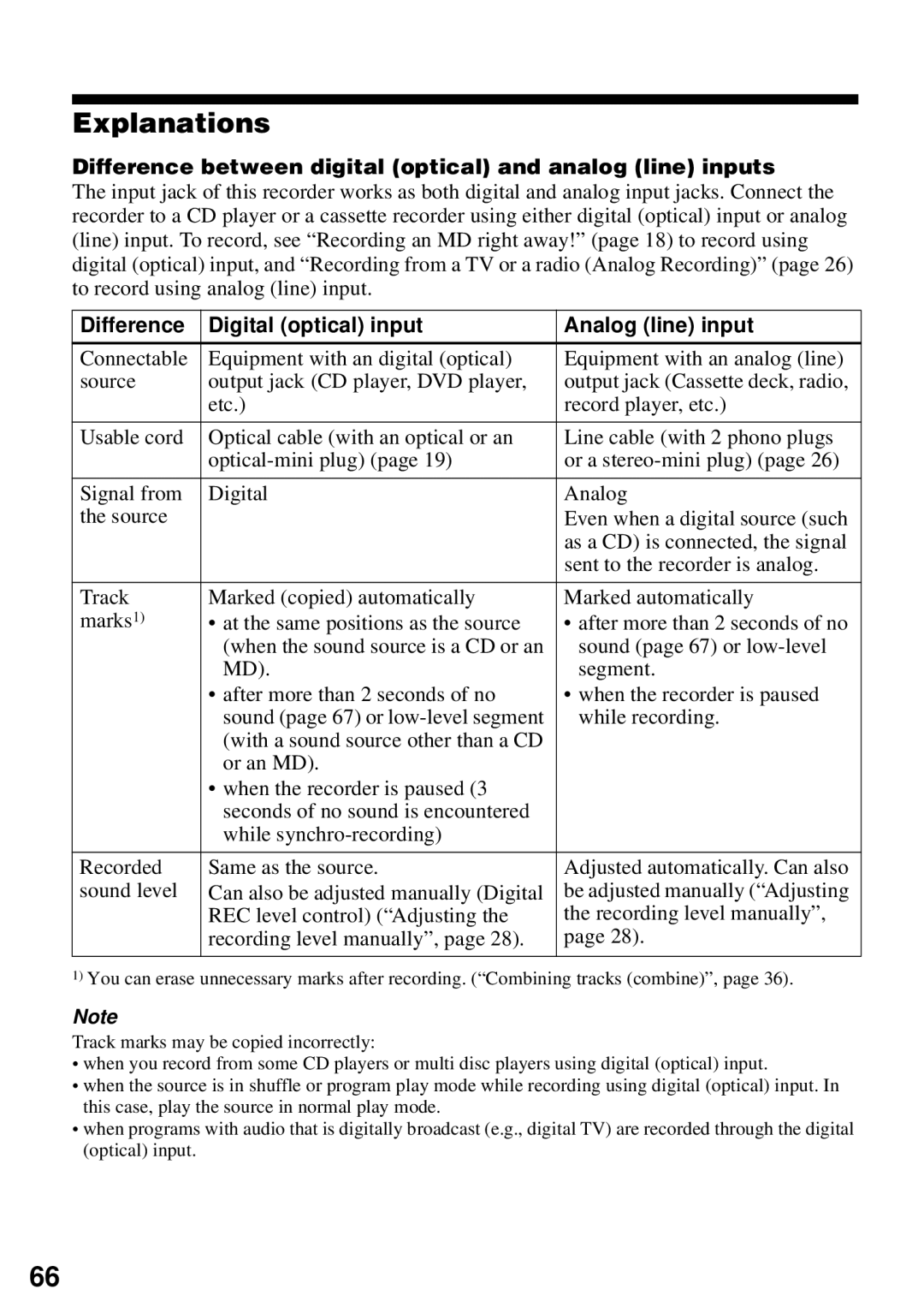Explanations
Difference between digital (optical) and analog (line) inputs
The input jack of this recorder works as both digital and analog input jacks. Connect the recorder to a CD player or a cassette recorder using either digital (optical) input or analog (line) input. To record, see “Recording an MD right away!” (page 18) to record using digital (optical) input, and “Recording from a TV or a radio (Analog Recording)” (page 26) to record using analog (line) input.
Difference | Digital (optical) input | Analog (line) input |
|
|
|
Connectable | Equipment with an digital (optical) | Equipment with an analog (line) |
source | output jack (CD player, DVD player, | output jack (Cassette deck, radio, |
| etc.) | record player, etc.) |
|
|
|
Usable cord | Optical cable (with an optical or an | Line cable (with 2 phono plugs |
| or a | |
|
|
|
Signal from | Digital | Analog |
the source |
| Even when a digital source (such |
|
| as a CD) is connected, the signal |
|
| sent to the recorder is analog. |
|
|
|
Track | Marked (copied) automatically | Marked automatically |
marks1) | • at the same positions as the source | • after more than 2 seconds of no |
| (when the sound source is a CD or an | sound (page 67) or |
| MD). | segment. |
| • after more than 2 seconds of no | • when the recorder is paused |
| sound (page 67) or | while recording. |
| (with a sound source other than a CD |
|
| or an MD). |
|
| • when the recorder is paused (3 |
|
| seconds of no sound is encountered |
|
| while |
|
|
|
|
Recorded | Same as the source. | Adjusted automatically. Can also |
sound level | Can also be adjusted manually (Digital | be adjusted manually (“Adjusting |
| REC level control) (“Adjusting the | the recording level manually”, |
| recording level manually”, page 28). | page 28). |
|
|
|
1)You can erase unnecessary marks after recording. (“Combining tracks (combine)”, page 36).
Note
Track marks may be copied incorrectly:
•when you record from some CD players or multi disc players using digital (optical) input.
•when the source is in shuffle or program play mode while recording using digital (optical) input. In this case, play the source in normal play mode.
•when programs with audio that is digitally broadcast (e.g., digital TV) are recorded through the digital (optical) input.
66
